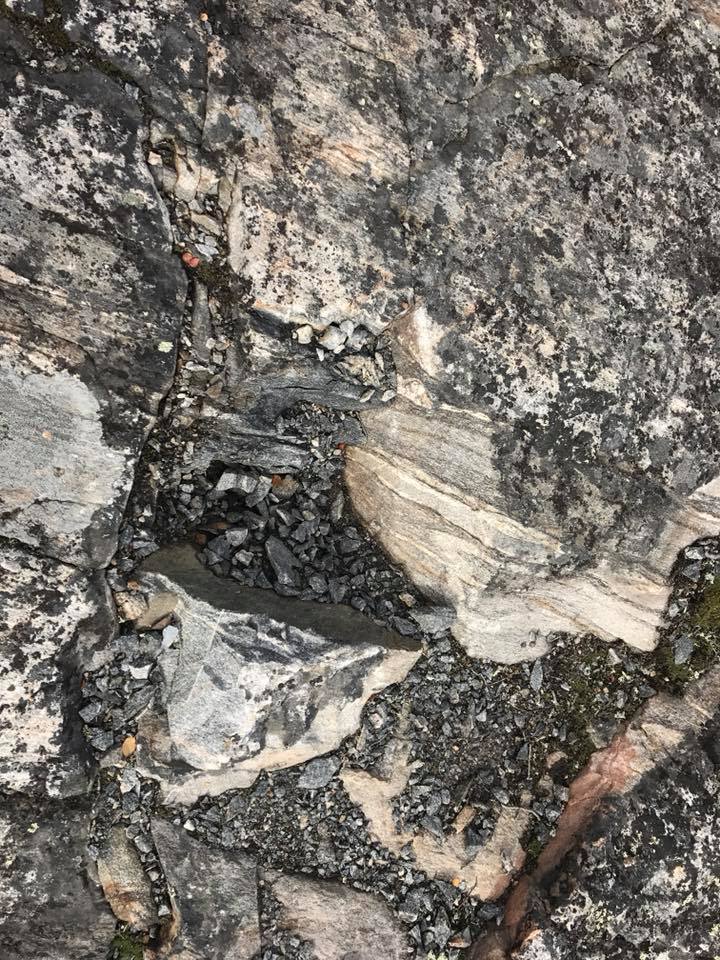
Exploring Earth’s Ancient History : The Acasta Gneiss
Share
The Acasta Gneiss stands as one of the most compelling subjects in geoscience, offering a unique perspective on the early Earth. This ancient rock formation, located in the Northwest Territories of Canada, is a key to unlocking the mysteries of our planet’s formative years. Crystal World Founder and Geologist Tom Kapitany undertook a field trip in 2017 to collect museum specimens. ( see field notes and photos at the bottom of this post)
Here’s an exploration into the significance of the Acasta Gneiss and what it reveals about the Earth’s geological history.
The Acasta Gneiss is believed to have formed approximately 4 billion years ago, earth’s oldest known evolved rock may have formed from impact melts. Research suggests that the Idiwhaa gneisses within the Acasta Gneiss Complex were produced by partial melting of iron-rich hydrated basaltic rocks at very low pressures, likely due to meteorite impacts during the Hadean Eon. These impacts provided the intense heat necessary for melting at shallow crustal levels, leading to the formation of these ancient felsic rocks
Acasta Gneiss is composed of bands of silicate minerals, including quartz, feldspar, and amphibole, which have undergone billions of years of metamorphosis due to intense heat and pressure. This transformation from igneous rock to gneiss captures the dynamic processes that have shaped the Earth’s crust.
Scientific studies of the Acasta Gneiss have focused on its zircon content, which has been instrumental in dating the rock. Zircons are resilient minerals that can withstand geological processes without losing their internal structure, making them ideal for radiometric dating. The data obtained from these zircons has not only confirmed the age of the Acasta Gneiss but also provided insights into the conditions of early Earth.
Here are 3 fascinating facts about the Acasta Gneiss.
-
Ancient Origins: The Acasta Gneiss is considered to be the oldest known exposed rock on Earth. With an age of about 4.03 billion years, it predates the rocks found in other ancient formations.
-
Geological Significance: Located in the Slave Craton of the Northwest Territories, Canada, the Acasta Gneiss is primarily composed of tonalitic and granodioritic gneisses, with minor amounts of mafic and ultramafic rocks.
-
Discovery and Naming: The Acasta Gneiss was discovered in 1983 by Geological Survey of Canada geologist Janet King. It was named after the nearby Acasta River, reflecting the tradition of naming geological features after local landmarks.
The Acasta Gneiss, while not typically used in a commercial sense due to its scientific value, holds significant importance in several areas:
-
Scientific Research: It serves as a crucial subject for geological studies, particularly in understanding the early Earth’s crust and its formation processes.
-
Educational Resource: The Acasta Gneiss is used as an educational tool to teach about the Earth’s ancient history and the geological timescale.
-
Geological Benchmark: It provides a benchmark for comparing the ages of other rock formations, helping to map the chronological landscape of our planet’s geological history.
-
Tectonic Studies: The rock is a repository of chemical, age, and isotopic information, offering insights into the tectonic processes that occurred on the early Earth.
-
Zircon Studies: Zircon minerals found within the Acasta Gneiss are used to date the rock and understand its complex geological history, making it essential for studies in geochronology.
These uses underscore the Acasta Gneiss’s role as more than just a rock; it’s a key to unlocking the secrets of Earth’s deep past and the processes that have shaped the world we know today.
References:
- Wikipedia (en.wikipedia.org)
- SpringerLink (link.springer.com)
- Historical Geology (historical-geology.com)
- Chemistry & Engineering News (cen.acs.org)
Crystal World Geologist Tom Kapitany's 2017 Field Trip



